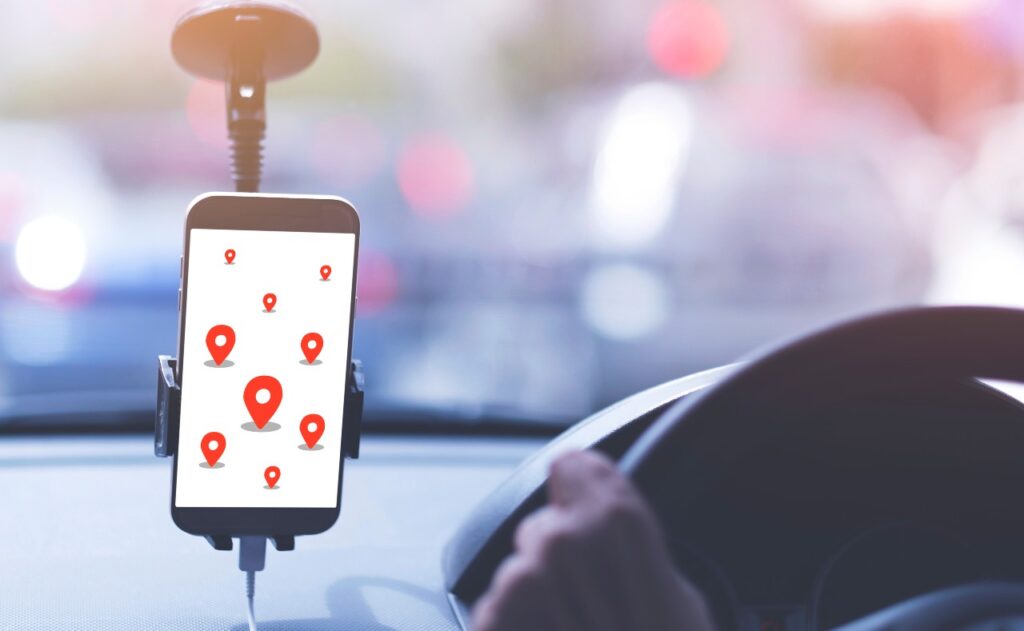Rideshare accidents: Who’s affected?

Were you or a loved one involved in an Uber or Lyft accident? Do you know what your rights are and how to demand compensation?
When you pay an Uber or Lyft bill, you are buying more than a ride. You are paying for insurance. Uber pays as much as $4.8 billion annually for insurance, and Lyft said it had to raise rates because its insurance costs are getting steeper.
With more than 1.7 million rideshare drivers transporting some 36% of Americans each year, there are bound to be accidents. Uber and Lyft say they are committed both to safety and to taking care of anyone injured or vehicles damaged by their drivers.
If you are in an accident involving Uber or Lyft, you may have a right to compensation, and they have the insurance to pay it, whether you are a rider, passenger or delivery driver.
Do you qualify?
If you were injured or a loved one was killed in an Uber or Lyft accident, or if you suffered property damage, you may be entitled to compensation.
Please fill out the form on this page for more information.
By the numbers
Both Uber and Lyft release public reports on fatal accident statistics to point out that their records are better than national averages — little comfort to those who have suffered. Here are the numbers:
Uber (2019-2020)
- 101 deaths including 14 drivers and 19 passengers. Some 23 pedestrians and three bicyclists and scooter riders were killed. The remainder of the deaths were in other vehicles.
- All but 6% of fatalities were caused by drivers in other vehicles.
- 105 deaths. Lyft’s report does not break out specific cases.
There are no recent numbers on how many total accidents are caused by ridesharing and delivering, but estimates are that the number of accidents increased by 3% after ridesharing was introduced.
It is known that accident causes are the same everywhere: drunk or wrong-way driving, distractions, speeding, as well accidents caused by passengers, weather, animals or debris in the road and malfunctioning vehicles. Uber and Lyft drivers are in as much danger as their passengers. And while it is most often another driver’s fault (according to the companies’ safety reports), it is to a great extent your responsibility, whether as a rideshare driver, deliverer or passenger, to make sure you receive the compensation to which you may be entitled.
What to do after a rideshare accident
Rideshare apps stress that anyone involved accidents should, if at all possible, call 911 before reporting accidents to the rideshare company. Numerous sites on the web urge you to:
- Insist police take a report. Take the number of the report so that you or your lawyer can easily retrieve it.
- Be sure you have the names, addresses and insurance numbers of all parties involved.
- Note details of the accident or be sure the police have that information in their report.
- Take pictures of all vehicles involved in the accident and document with photos any obvious injuries.
- Be careful not to make matters worse. Look around and assess your situation in terms of immediate safety, oncoming traffic, blind spots and other possibilities for further harm, and take all appropriate measures to be safe until police arrive.
- See a doctor if you have any doubts about possible injuries.
- Consider hiring an experienced lawyer.
Rules for drivers are the same for both companies.
- Call the police and paramedics, 911, even if the accident seems minor.
- Save the number of the police report.
- Take photos of all vehicles involved and all obvious injuries.
- Get the insurance information of other drivers, riders and third parties.
- Report the crash to the rideshare company by phone or through its website or app.
How insurance works, or doesn’t
The ins-and-outs of insurance coverage for rideshare and delivery accidents are, to say the least, extremely complicated.
The companies work with dozens of insurance companies to meet various state requirements, and those insurance companies’ policies work in combination with drivers’ personal and additional professional policies, riders’ policies, third-party policies and delivery policies.
It might look something like this: Charlie drives for Uber. Claire and Cabot are his riders. Their car is struck in Wyoming and pushed across the state line by a truck driven by a teenager named Carl. Charlie, Claire, Cabot and Carl have various degrees of injuries, as does Carl’s passenger, Catherine.
Charlie the driver has Uber insurance through Companies A and B, personal insurance through Company C and additional gap insurance through Companies C plus E. Claire and Cabot are insured through Company F as a couple, and although her husband was sharing the car to get to a doctor’s appointment, Claire was on a job at the time and has coverage through her employer who works with insurer G.
There are billions of dollars among various insurance policies to make everyone whole, financially anyway. But whose insurance is primary? Do the various companies have different standards of injury or requirements for documenting the cases? Does it matter who caused the accident? Did everybody file on time?
Here is some of what is involved in sorting this all out.
Uber:
According to the company, Uber’s insurance coverage for rideshare and delivery drivers includes:
- At least $1 million of property damage and injuries to riders and third parties involved in an accident when the driver is at fault.
- Costs to repair driver car up to its actual cash value, with a $2,500 deductible, contingent on the driver’s personal insurance.
- Depending on the state, Uber may maintain more coverage for the Uber driver and passengers in such cases as hit-and-run accidents caused by uninsured or underinsured drivers and personal injury protection and medical payments no matter who is at fault.
Lyft:
According to the company, Lyft covers:
- At least $1million for third-party auto liability.
- First-party coverages, which may include uninsured motorist coverage, underinsured motorist and other coverage.
- If a driver obtains comprehensive and collision on his or her personal auto policy, Lyft then maintains contingent comprehensive & collision coverage up to the actual cash value of the car ($2,500 deductible).
In both cases these are outlines for coverage when the drivers are on the job. Other standards apply when they are on the way to pick up passengers, or driving around waiting to get app calls for rides. Some drivers also maintain their own gap policies to cover what the rideshare companies do not.
All of the details may depend on the state in which the accident takes place, various insurance company rules, traffic laws, accident reports, witness reports and in some extreme cases, forensics.
Insurance that covers at least $1,000,000 for property damage and injuries to riders.
Navigating insurance covering Uber and Lyft accidents
While rideshare companies say safety first and promise to cover accidents, it can be difficult to sort out whose insurance covers what, when, and which state laws and regulations apply.
If you or a loved one were in an accident involving Uber or Lyft, you may qualify to receive legal help to sort through the intricacies of insurance, and to receive compensation to cover your injuries, property damage, inability to work and other distress, whether you are a driver, passenger or third party.
Please fill out the form on this page to see if you qualify for a FREE case evaluation.
GET HELP – IT’S FREE
Join a rideshare accident investigation
If you qualify, an attorney will contact you to discuss the details of your potential case at no charge to you.
After you fill out the form, an attorney(s) or their agent(s) may contact you to discuss your legal rights.
ATTORNEY ADVERTISING
The choice of a lawyer is an important decision and should not be based solely on advertisements.
PAID ATTORNEY ADVERTISEMENT: THIS WEB PAGE IS AN ADVERTISEMENT AND THE PARTICIPATING ATTORNEY(S) ARE INCLUDED BECAUSE THEY PAY AN ADVERTISING FEE. Top Class Actions is not a law firm, lawyer referral service, or prepaid legal services plan. We do not endorse or recommend any third-party claims processing company, lawyer, or law firm who participates in the network. We do not make any representation, and have not made any judgment, as to the qualifications, expertise, or credentials of any participating lawyer or processing group. No representation is made that the quality of the legal services or claims processing to be performed is greater than the quality of legal services or claims processing performed by other lawyers or claims processing group. The information contained herein is not legal advice. Any information you submit to Top Class Actions does not create an attorney-client relationship and may not be protected by attorney-client privilege because Top Class Actions is not a law firm. Instead, your information will be forwarded to an attorney(s) or their agent(s) or a claims processing firm for the purpose of a confidential review and potential representation if you qualify. You will only be contacted by an attorney(s) or their agent(s) in response to your inquiry if your initial information appears to qualify you for representation. If you are not contacted by an attorney(s) or their agent(s) within one week, you should consult another firm since all legal claims are subject to filing deadlines. All photos on this website are stock art and do not depict clients.












